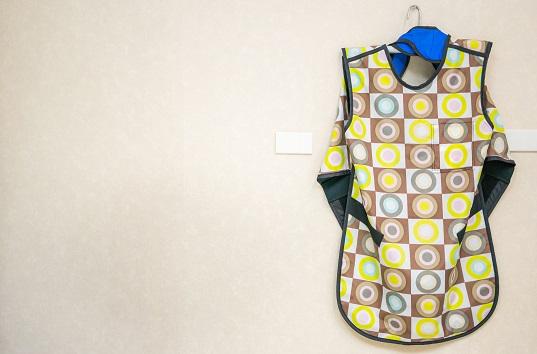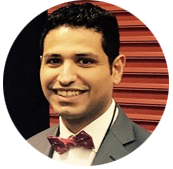Is Your Interventional Career the Scourge of Your Musculoskeletal System?
Given the toll that wearing a lead apron takes on an interventional cardiologist’s body, one fellow advocates for greater awareness and better self-care.

If you ask any interventional cardiologist about the musculoskeletal effects of their career on their body, you will likely hear ample stories about colleagues suffering from pain, missing days of work, or even undergoing orthopedic operations.
The hazards of radiation and blood-borne pathogen exposure in our field are well established, but the consequences on our bones and muscles are not as properly recognized. To protect ourselves from harmful radiation in the cath lab, we wear protective garments like lead aprons, but standing in a 3.7-kg apron for hours on end making repetitive motions in awkward positions should qualify as an Olympic sport. Neck and lower back injuries are the most common, but lower limb complications are also frequent.
How Big Is the Problem?
The Society for Catheterization and Cardiovascular Interventions (SCAI) surveyed its members in 2014 regarding orthopedic complications they may have. The response was alarming, with around 50% reporting at least one injury. What was more concerning was that the prevalence and incidence of musculoskeletal complications had not improved since their previous survey in 2004.
Authors of another study, published in the American Journal of Cardiology back in 1997, termed this overall group of complications “interventionalist’s disc disease.” They conducted a comparative survey of interventional cardiologists, orthopedic surgeons, and rheumatologists—who on average stand in lead aprons for long, medium, and short periods of time, respectively. More than 50%, 40%, and 31% of these physician groups required treatment for spine symptoms. Results have been similar for interventional radiologists as well.
Even as a fellow with limited experience in the cath lab, none of these data are surprising to me.
Preventing the Pain
It only makes sense that musculoskeletal problems will compound over years of practice. So until robotic PCI becomes routine or your institution invests in weightless lead protection, it’s important to choose the right lead apron for your body.
I prefer the two-piece apron with a blouse and kilt, as it divides the weight between the upper and lower back. Sizing is important, so make sure to choose one that is tailored to you and feels the most comfortable. These are not one-size-fits-all garments!
I would also recommend taking the time to make several adjustments that can be done to the cath lab table and screen monitors. After all, you wouldn’t drive a car without first fixing the rearview mirror and seat height, right? Set the table at the height where you can comfortably position your hand to handle the catheters and wires. Next, after puncturing the artery (#radialfirst) and passing the wire into the aorta, adduct the patient’s arm fully to the side and rotate it to a neutral position. This has several advantages, including more comfort for the patient, increased space between the operator and the radiation source, and an effective work space with all tools parallel and close by on the table. Finally, monitors should be positioned within your direct field of view to prevent unnatural positioning of your head, neck, and shoulders during the case and to minimize excessive neck movements.
What about the damage already done and the injuries that might still occur even after you’ve taken every precaution? Exercise may help to treat and prevent spine pain. However, the jury is still out regarding whether your efforts are best focused on aerobic, strength/resistance, or coordination/stabilisation exercises. In my view, aerobic exercise is of course helpful in preventing diastolic dysfunction in the future (as our heart failure colleagues would tell us), but core strength and special muscle group training as well as optimal posture training might be what will help us the most.
Some gyms now have electromyography (EMG) machines to measure muscle activity. After I started rotating in the cath lab 2 years ago, I noticed that my trapezius activity was high at rest on the EMG—something that wasn’t noted before. Fortunately, I realized that it was my time in the cath lab that was negatively affecting my posture and causing unwanted muscle overactivity. I quickly corrected it with the help of my personal trainer and constantly reminded myself to actively keep my shoulders down.
Another important factor I began to pay attention to is pelvic tilt. Something I also learned from my personal trainer is that it is vital to avoid too much anterior or posterior tilt of your pelvis as this can alter the natural lordosis of the lower spine while wearing a lead apron.
Soothe and Check In With Your Body
I’m not going to get into the treatment side of musculoskeletal complications as I am hoping my peers will mostly avoid that for now, but I have a couple of suggestions for soothing muscle fatigue and minor muscle pains. For me, therapeutic massage has been an effective means of control of my musculoskeletal pain and has also helped me relax—something fellows don’t spend enough time trying to do. Make sure to find a spa or massage facility that you like, and communicate with the masseuse exactly where to focus and how deep to apply pressure. A gift certificate could be an ideal gift from a spouse or significant other or even an employer! Alternative therapies such as yoga and meditation could also be of benefit, as these activities encourage you to check in with your body and make sure nothing is out of whack.
Finally, I encourage all cath lab managers to integrate musculoskeletal health into the orientation curricula of new fellows and other cath lab staff and to encourage regular muscle-strengthening and posture-targeting exercises. Some cath lab teams include engineers and medical physicists for radiation safety. Perhaps it’s time to have a musculoskeletal specialist as part of that team. Imagine if staff could have regular musculoskeletal examinations perhaps as frequently as they have their radiation dose checked!
Cath lab technology is changing rapidly. Hopefully we’ll develop an alternative to the lead apron that makes this entire post moot. However, you’ve only got one body, and without it being in good, working condition, you might not be able to practice the field of medicine that you love.
2018-2019 Fellow Talk Blogger
Mesfer is a second-year general cardiology fellow at Dunedin Hospital (Otago, New Zealand), where he also…
Read Full Bio

Comments